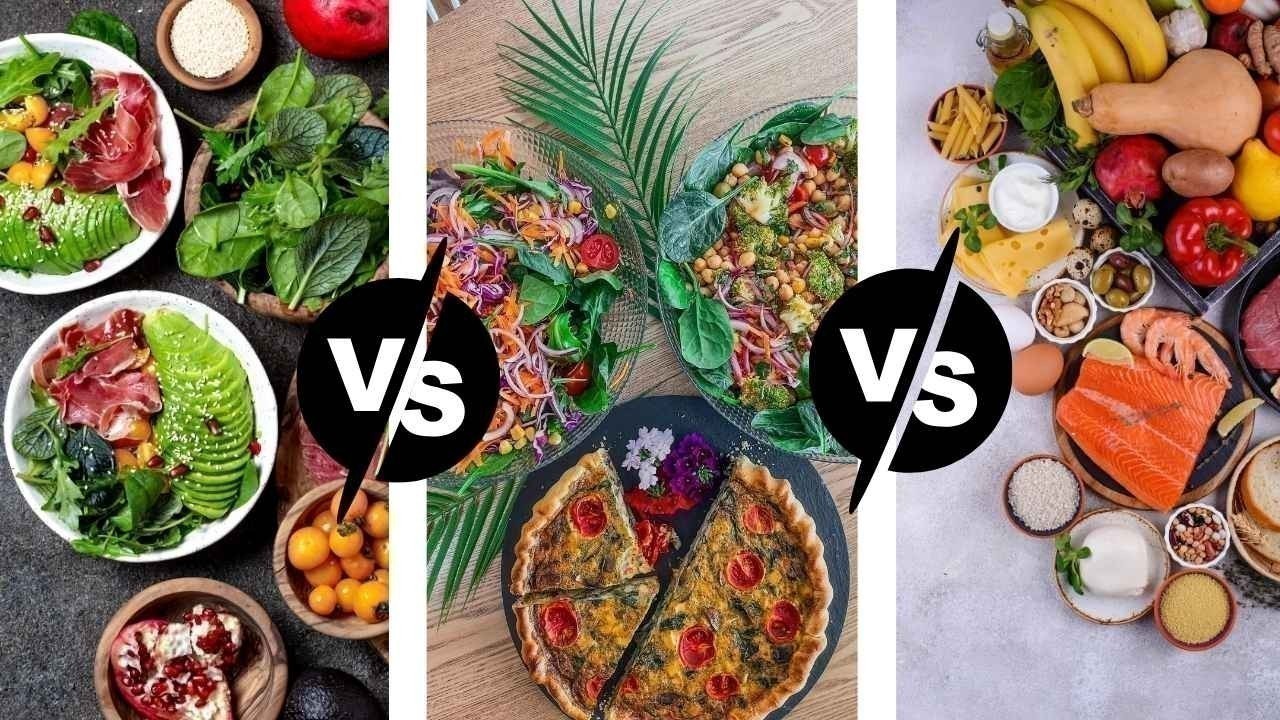
Post by : Anis Karim
Nutrition trends come and go, but some mark deeper shifts in how society views food, health and lifestyle. One such shift in 2025 is the clear and sustained move toward diets that emphasise higher protein, greater fiber and reduced sugar. Consumer search data, retail behaviour and industry reports all point in the same direction: people are no longer content to focus solely on calories or traditional labels of “healthy” — they are increasingly focused on macronutrient quality, satiety, metabolic health, and long‑term wellness.
What does this mean in practice? It means that the days of “low‑fat” being the primary health message are behind us. Instead, foods rich in lean or plant‑based protein, those which help digestion through fiber, and products/formats that minimise added sugar are becoming the preferred norm. This article explores the drivers behind this nutrition shift, the data that supports it, how it manifests at home, in restaurants and on the shelf, and what practical guidance readers should take away.
Protein has long been associated with muscle building and athletics. But in 2025, its role has broadened. It is no longer just about bulking — it’s about every‑day health. Research shows that high‑protein meals tend to increase feelings of fullness, stabilise blood sugar, and protect lean body mass as people age. One industry report found that a large share of consumers (around 58‑70 %) are actively looking to increase protein content in meals.
This shift has several underpinnings: ageing populations wanting to preserve muscle mass, busy professionals looking for satiating meals that slow hunger, and an increased awareness that protein can help metabolic health beyond simple calorie counting.
Fiber is the “long game” nutrient. It aids digestion, supports gut health, improves satiety, and has been linked with lower risks of cardiovascular disease and certain cancers in large‑scale studies. In 2025, fibre is more than a footnote — it is being repositioned as a major nutritional pillar. Surveys show a rising number of consumers seeking fiber‑rich choices, and snack and food manufacturers are responding accordingly.
Sugar, especially added sugar, has increasingly been seen as a culprit in metabolic syndrome, obesity, Type 2 diabetes and fatty‑liver disease. While the low‑fat message faded, the low‑sugar (or reduced‑sugar) message is gaining traction. In many markets, consumers are now actively seeking food and beverage products with lower sugar, cleaner labels, or alternative sweeteners. This is partly because they recognise that many processed foods masquerade as “healthy” but still pack hidden added sugars.
When you put high‑protein, high‑fiber and low‑sugar together, you create a nutrient‑dense, satiating, metabolic‑friendly diet framework. Such a diet:
Helps control hunger and snack impulses (thanks to protein + fiber).
Dampens rapid blood‑sugar spikes (thanks to low sugar).
Supports digestive health (fiber) and muscle/lean mass (protein).
Aligns with longer‑term wellness goals rather than short‑term dieting.
Hence the appeal of this trifecta: it ticks boxes for many of today’s health‑conscious consumers.
Multiple industry sources point to rising interest in these nutrition signals:
In snack markets, one study found that 56 % of U.S. consumers reported trying to consume more protein, 53 % more fiber, and 58 % less sugar compared to the previous year.
Another global nutrition trends report shows that in 2025, diets rich in lean proteins, whole grains (which contain fibre) and minimal added sugar top priority lists for health groups.
Reports on “protein‑forward” food innovations show that brands are reformulating products to boost protein content while reducing sugar and using fibre‑rich ingredients.
Nutrition commentary indicates that fibre is now being discussed in the same breath as protein — i.e., “protein was the big trend, and now fibre is next”.
Together, these data points confirm that the interest is real, broad‑based and commercially relevant.
Several factors converge to explain why this nutrition pivot is occurring now.
As populations age, the focus on preserving functional health (muscle strength, mobility, metabolic resilience) becomes more prominent. Protein intake helps, and fibre aids digestive health — both become meaningful beyond just “losing weight”.
Conditions such as obesity, Type 2 diabetes and fatty liver disease are a growing concern globally. Many consumers recognise that sugar‑heavy diets and low fibre consumption are risk factors. There is a shift from reactive health (treating disease) to proactive nutrition.
Modern life is busy. Hunger between meals, midday energy crashes and convenience eating are common. Foods that satiate (thanks to protein + fiber) while avoiding sugar crashes are increasingly appealing.
Food brands have picked up on these signals and are actively introducing “protein‑boosted”, “fiber‑rich” and “low‑added‑sugar” claims. These claims feed visibility, search interest and consumer trial — reinforcing the cycle.
Wellness influencers, nutrition bloggers and social‑media trends help accelerate interest in macros and diet quality. Instead of trends focused on “calories in/calories out”, the narrative is shifting to “what kind of calories” and “how my macros support my health”.
While protein was traditionally animal‑based, the move toward plant‑based proteins aligns with fibre‑rich diets and lower saturated fat/sugar profiles. Many consumers now view food choices through dual lenses of personal health and planetary health, which supports this triad of nutrition signals.
What does this shift actually look like for a typical consumer, restaurant menu, or supermarket shelf?
At home, diets increasingly feature:
Lean proteins (chicken breast, fish, legumes, tofu) rather than fatty processed meats.
Whole‑grain or high‑fibre bread, oats, and cereals rather than white refined grains.
Snacks that emphasise protein and fibre (e.g., bean chips, protein bars with minimal sugar).
Drinks with less added sugar, or sugar‑free alternatives.
Meals structured around satiety (e.g., protein + fibre + veggies) rather than just smaller portions.
Menus are reflecting the shift:
“Protein bowls” combining lean protein + legumes + whole grains + greens.
Snacks and small plates marketed as “high‑protein” or “riced cauliflower + beans”.
Desserts reformulated to reduce sugar while maintaining texture and flavour (e.g., yogurt‑based, plant‑protein ice creams).
Smoothies or drinks labelled as “low sugar” or “no added sugar” and emphasising fibre content (chia, flax seeds).
Consumers now search for labels such as: “20 g protein per serving”, “10 g fiber per serving”, “<5 g added sugar”. Brands respond with claims like: “high protein, high fiber”, “no added sugar”, “reduced sugar”. Reformulated snack foods, cereals, yoghurt, beverage categories are being impacted.
Search data and purchase behaviour show:
Increased searches for “high protein snacks” and “high fiber breakfast” this year.
Fewer impulse sugar‑heavy snack purchases; more interest in functional snacks.
Consumer willingness to pay a modest premium for foods that deliver the nutrition trifecta.
Better appetite control: High‑protein + high‑fibre meals tend to keep hunger at bay, reducing extra snacking.
Improved blood‑sugar stability: Lower sugar intake plus fiber reduces post‑meal blood‑sugar spikes.
Gut health support: Fiber and certain proteins (legume/plant‑based) can improve microbiome diversity.
Longer‑term health benefits: Higher fibre intake is linked with lower risks of heart disease, some cancers and improved digestive health.
Enhanced muscle maintenance & metabolic resilience: Particularly for older adults, higher protein can aid lean mass retention.
Overemphasis on one macro at the expense of overall diet: For example, eating “high protein” processed bars still high in unhealthy fats or additives.
Misunderstanding fibre: Adding lots of fibre suddenly can cause bloating, gas or nutrient absorption issues. Gradual adjustment is key.
Sugar replacement trade‑offs: “Low sugar” is often achieved by using artificial sweeteners or sugar alcohols, which may have other impacts.
Label confusion: “High protein” does not always mean healthy overall; context matters.
Accessibility: Some high‑protein/high‑fibre foods cost more, or are less available in certain regions, raising equity issues.
Nutrition commentators stress that while the shift is positive, context and balance remain critical. They point out:
The protein leverage hypothesis suggests humans eat until protein needs are met, which might increase calorie intake if protein is too low in the diet.
Fibre trends must be matched with hydration and gradual increases to avoid digestive discomfort.
Sugar reduction should not lead to nutrient deficits or over‑reliance on ultra‑processed “diet” foods.
Macro‑driven thinking (just protein + fibre + low sugar) still needs to be balanced with micronutrients, healthy fats and food variety.
In short: the trifecta is valuable, but it cannot substitute for the broader patterns of a wholesome, varied diet.
For a content writer focusing on health and wellness, this shift offers rich story angles:
“Why your snack drawer is going high‑protein + high‑fibre this year”
“How to read labels: what ‘high protein’ and ‘high fibre’ really mean”
“Low sugar breakfast ideas for busy professionals”
“Plant‑based proteins: how to combine fibre and protein for older adults”.
From a consumer perspective:
Check labels: Look for grams of protein and fibre per serving, and the amount of added sugar.
Prioritise whole foods: Legumes, whole grains, lean meats, seeds, nuts, vegetables.
Be realistic: Shift gradually; don’t overhaul overnight.
Balance the macros: Protein + fibre + low sugar is great, but still include healthy fats, micronutrients and variety.
Align with lifestyle: Busy schedules need snacks that deliver; older adults may prioritise muscle retention; younger folks may look for satiety and energy.
Start meals with protein + fibre: For instance, eggs or tofu + vegetables + whole grain toast.
Snack smart: Swap refined sweets for Greek yoghurt + berries + chia seeds, or bean‑based chips.
Cut hidden sugar: Review drinks and sauces — many have added sugar. Choose options labelled “no added sugar” or minimal sugar.
Upgrade fibre slowly: Add extra vegetables, legumes, whole grains; if fibre is currently low, increase gradually to minimise digestive side‑effects.
Watch serving sizes: High‑protein bars may still be calorie‑dense; read labels.
Balance with healthy fats: Avocado, nuts, olive oil, seeds support nutrient absorption and overall health.
Hydrate: Extra fibre often needs more water and movement to support digestive processing.
Instead of white bread sandwich for lunch → whole‑grain wrap + grilled chicken or beans + salad.
Instead of sugar‑heavy cereal in morning → oatmeal with nuts, seeds, berries, protein powder or yoghurt.
Instead of soda or sweetened drink → sparkling water with fruit slices or unsweetened iced tea + snack rich in fibre.
Instead of candy bar snack → savoury roasted chickpeas or lentil puffs (higher fibre + moderate protein).
Instead of dessert loaded in sugar → Greek yoghurt with cocoa nibs & a few dark‑chocolate shards, or a small protein‐based dessert.
Given current signals, this nutrition trend is likely to evolve further. Some anticipated developments:
Broader adoption of plant‑based proteins that also offer fibre (legumes, pulses, mycoprotein).
Increase in functional fibres (prebiotics, soluble fibre) that support gut health beyond basic roughage.
Food and beverage brands will continue to reformulate, emphasising “protein + fibre” claims and “reduced sugar” claims in balance.
Greater consumer demand for transparency: clearer labels showing grams of added sugar, fibre, quality of protein source.
Intersection with tech and personalised nutrition: wearable trackers, macro‑analytics and AI may guide individual protein/fibre/sugar targets.
Regional adaptation: In markets like India, Southeast Asia, fiber‑rich whole grains, legumes and low‑sugar snacks will grow fastest as health awareness spreads.
The nutrition narrative for 2025 is clear: the sweet spot of dietary interest lies in higher protein, greater fibre and lower sugar. Search behaviour, purchase data and food‑industry signals all converge. This reflects not just a fad but a broader shift in how consumers value food — less about simply being “light” and more about being nutrient‑smart, satiating and metabolically supportive.
For writers, health communicators and consumers alike, the message is empowering: the fundamentals of nutrition remain — but the language is changing. Understanding how to incorporate protein, fibre and low sugar into everyday meals is becoming a key part of living well.
At the same time, it’s vital to remember that nutrition is never just about three macros. Variety, moderation, quality and individual context still matter. This trend isn’t about perfection — it’s about better choices, more awareness and building habits that sustain long‑term health, not just short‑term fixes.
As this shift becomes embedded, it promises a healthier baseline: fewer energy crashes, better gut function, steadier blood glucose, and a diet that supports not only today’s needs but tomorrow’s vitality.
This article is for editorial and informational purposes only. It summarises recent trends in nutrition based on public data and industry reports. It is not a substitute for medical, dietary or professional nutritional advice. Readers should consult qualified professionals before making significant changes to their diet or health routines.

Raha Kapoor Turns Three: Inside Ranbir and Alia’s Daughter’s Birthday Bash
Ranbir Kapoor and Alia Bhatt’s daughter Raha turned three, with family and close friends, including

Veteran Actress and Singer Sulakshana Pandit Passes Away at 71 in Mumbai
Sulakshana Pandit, veteran actress and singer, dies at 71 in Mumbai after a prolonged illness. Sulak

UP Warriorz Shock Fans by Releasing World Cup Star Deepti Sharma
Despite being Player of the Series in the ICC Women’s World Cup 2025, Deepti Sharma has been release

3 Dead, 5 Trapped After Power Plant Tower Collapse in South Korea
A boiler tower collapse at a decommissioned power plant in Ulsan, South Korea, leaves three dead and

UAE Annual Meetings 2025 Set New Vision for National Growth
The UAE Government Annual Meetings 2025 concluded in Abu Dhabi with landmark national initiatives, n

Israeli Hostage Rom Braslavski Alleges Sexual Abuse in Gaza
Rom Braslavski, Israeli hostage, claims sexual abuse in Gaza captivity, highlighting Rom Braslavski’

Animenia 2026 Returns to Abu Dhabi with AED400K Cosplay Prize
Animenia 2026 returns to Manarat Al Saadiyat from Feb 11–15, blending anime, cosplay, gaming, and mu

The New Season Alert Maharani Season 4 Coming Soon
Maharani Season 4 arrives on SonyLIV with Huma Qureshi as Rani Bharti facing new rivals bold politic

Paramount+ to Stream PBR’s Top Bull Riding Series in 2025
Paramount+ secures 5-year rights for PBR's "Unleash the Beast," streaming live across 17 states from

Zohran Mamdani Victory Speech Goes Bollywood with Dhoom Machale
Zohran Mamdani wins NYC mayor race, becoming the city’s first Muslim and South Asian mayor, making h

UAE Life High Stress 3 Simple Ways Expats Can Manage Pressure
Expats in the UAE face daily pressure and burnout Learn 3 simple effective ways to manage stress fin

Smart Meal Prep in Dubai Save Money Stay Healthy
Plan smart eat fresh Discover how meal prepping in Dubai helps you save money eat healthy and enjoy

The Ultimate Guide to Dieting in Dubai Keto vs Vegan vs Mediterranean
Discover Dubai’s top diet trends Keto Vegan and Mediterranean Find which plan fits your lifestyle f

Stay Fit in Dubai 7 Fun Outdoor Workouts Without a Gym
Explore 7 fun ways to stay fit in Dubai from beach runs to desert hikes and skyline yoga No gym nee

Beyond Biryani: Mastering Portion Control in Dubai’s Melting Pot of Cuisines
Discover how to enjoy Dubai’s diverse cuisines wisely Learn simple portion control tips to stay heal